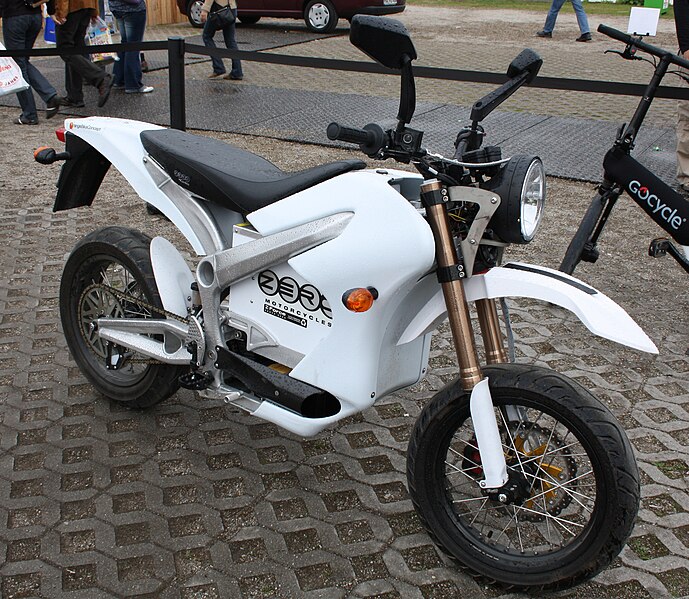The Future of Electric Powersports: Trends and What to Expect

Electric powersports are charging into the future with unparalleled momentum, heralding a new era of recreation and competition that’s cleaner, quieter, and more exhilarating than ever before. As Powersport buyers, we stand at the forefront of this revolution, guiding enthusiasts and prospective buyers through the electrifying world that awaits. This article delves into the electric powersports landscape, addressing motorcycle trends, ATV trends, electric motorcycle resales, and the role of smart connectivity in reshaping the industry.
Introduction to Electric Powersports
The realm of powersports is witnessing a seismic shift towards electrification, driven by a global push for sustainability and technological innovation. Electric motorcycles and ATVs are not just alternatives to their fossil-fueled counterparts; they represent the next frontier in high-performance and recreational vehicle design.
The Evolution of Electric Powersports
Electric powersports have transitioned from experimental prototypes to mainstream marvels, thanks to relentless advancements in electric propulsion technologies. This evolution is mirrored in the motorcycle trends, where electric models are achieving parity with, and in some cases surpassing, traditional motorcycles in speed, power, and range.
The Current State of Electric Powersports
Today’s market boasts an impressive array of electric motorcycles and ATVs, characterized by their efficiency, reduced carbon footprint, and cutting-edge design. This shift is indicative of broader ATV trends, as manufacturers prioritize sustainability without compromising on performance or thrill.
Rising Interest in Electric Recreation
As awareness and interest in environmental conservation grow, so does the appeal of electric powersports. Enthusiasts are increasingly drawn to the prospect of enjoying their favorite pastimes with a smaller ecological footprint, making electric vehicles an attractive option for the conscientious rider.
Why Electric Powersports Are Gaining Popularity
The surge in electric powersports’ popularity is multi-faceted, rooted in environmental, technological, and economic benefits that resonate with today’s consumers.
Environmental Benefits
Electric powersports vehicles significantly reduce emissions, contributing to cleaner air and less environmental degradation. This advantage aligns with the growing societal emphasis on sustainability and responsible recreation.
Technological Advancements
Advances in battery technology and electric motor efficiency have propelled motorcycle trends towards electric options that offer competitive range, power, and shorter charging times. These improvements make electric motorcycles and ATVs increasingly viable for both casual riders and professionals alike.
Economic Advantages
While the initial investment in electric powersports might be higher, lower running costs, maintenance expenses, and potential tax incentives present a compelling long-term economic case. This factor is particularly persuasive in markets where fuel prices are volatile.
Key Trends Shaping the Future of Electric Powersports
Several emerging trends are poised to drive the future of electric powersports, offering a glimpse into an exciting and dynamic industry landscape.
Advancements in Battery Technology
Continuous improvements in battery technology promise to extend the range, reduce weight, and lower costs of electric powersports vehicles. This trend is crucial for overcoming range anxiety and making electric options more accessible.
The Rise of Electric Racing Competitions
Electric racing competitions are gaining popularity, serving as both a testbed for innovation and a showcase for the thrilling potential of electric propulsion. These events highlight the competitive edge of electric motorcycles and ATVs, pushing the boundaries of what’s possible.
Smart Connectivity
Smart connectivity is becoming a staple feature, enhancing the riding experience with features like GPS navigation, real-time vehicle diagnostics, and app integration. This trend not only reflects the broader motorcycle and ATV trends towards digital integration but also sets new standards for safety, convenience, and engagement.
Challenges Facing Electric Powersports
Despite the promising outlook, electric powersports face several challenges that must be addressed to realize their full potential.
Battery Range and Charging Infrastructure
Limited range and insufficient charging infrastructure remain significant hurdles, especially in regions where electric vehicle adoption is in its early stages. Expanding the network of fast-charging stations and improving battery technology are critical steps towards mitigating these concerns.
High Initial Costs
The upfront cost of electric motorcycles and ATVs can deter potential buyers, despite the long-term savings. Manufacturers and policymakers need to work together to introduce incentives and financing options that make electric vehicles more accessible.
Market Acceptance and Perception
Changing perceptions and building trust in the reliability and performance of electric powersports are essential for wider adoption. Test rides, showcases, and transparent communication about the capabilities and advantages of electric vehicles can help overcome skepticism.
What to Expect in the Near Future
As we look ahead, several developments are set to shape the immediate future of electric powersports.
New Models and Innovations
Manufacturers are poised to unveil a range of new electric motorcycles and ATVs, featuring enhanced performance, longer range, and innovative designs. These introductions will cater to a broader audience, from urban commuters to adventure seekers.
Expansion of Charging Networks
Efforts to expand and improve charging infrastructure will continue, making electric powersports more viable for longer journeys and more convenient for daily use. This expansion is critical for supporting the growing number of electric vehicle users.
Regulatory Support and Incentives
Governments around the world are introducing regulations and incentives to encourage the adoption of electric vehicles, including motorcycles and ATVs. These policies will play a pivotal role in accelerating the transition to electric powersports.
Conclusion
The future of electric powersports is bright, marked by innovation, sustainability, and an ever-growing community of enthusiasts. As we navigate this exciting landscape, Powersport Buyers remains committed to providing the latest insights, trends, and advice to help our readers make informed decisions and embrace the electric revolution with confidence.
FAQs
Let Powersport Buyers tell you the value of your electric motorcycle or powersport vehicle. Get your motorcycle value here!
Electric powersports refer to recreational vehicles like motorcycles and ATVs powered by electricity instead of traditional gasoline engines. They offer a cleaner, quieter, and often more efficient alternative to conventional vehicles.
Electric powersports vehicles produce zero emissions during operation, significantly reducing their environmental impact compared to gasoline-powered vehicles. They contribute to cleaner air and less noise pollution.
Key challenges include overcoming range limitations, expanding charging infrastructure, managing high initial costs, and shifting consumer perceptions towards the viability and performance of electric vehicles.
Interested individuals can start by researching the latest electric models, attending test ride events, and engaging with online communities of electric vehicle enthusiasts. Additionally, keeping informed about new technologies and market trends is essential.
The future of electric powersports is promising, with advancements in technology, growing environmental awareness, and increasing consumer interest driving the market towards broader adoption and innovation.

